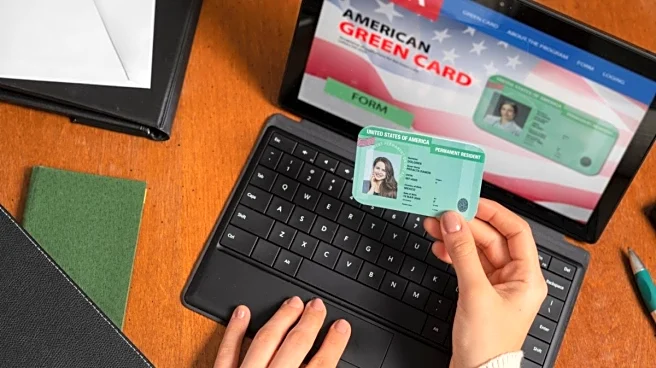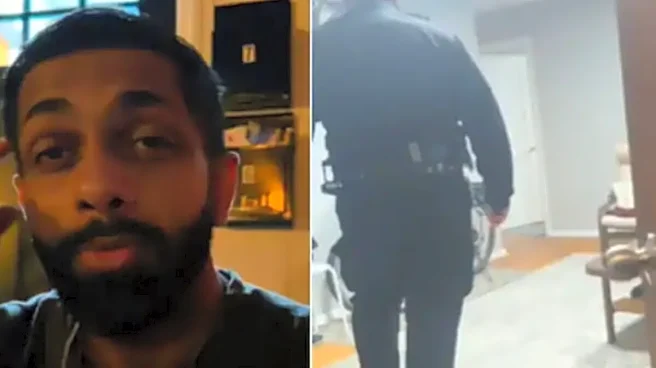In the United States, a Green Card for siblings is not treated the same as visas for immediate relatives such as spouses, parents, or unmarried children under 21. Instead, it comes under the family preference
system, which has fixed numerical quotas each year.
The sibling category, officially designated as the Family Fourth Preference (F4), has a global cap of about 65,000 visas each year, and each country can receive no more than 7 per cent of the total annual quota. Because this number is fixed and demand is extremely high, the waiting period for countries like India, Mexico, China, and the Philippines can extend well beyond 15 to 20 years.
Only US citizens aged 21 or older can file such petitions; lawful permanent residents, or Green Card holders, are not eligible to sponsor siblings. Citizenship may be by birth or naturalisation, and petitioners must be able to prove it through official documentation such as a passport, birth certificate or naturalisation certificate.
Who Qualifies As A Sibling And What Documents Are Needed
The sibling relationship must be established through at least one common parent. This can include biological, half, step, or adopted siblings, as long as the legal or familial link was created before the sibling turned 18 (or 16 in cases of adoption).
Each type of sibling relationship requires specific documentation. Adopted siblings must present an adoption decree confirming that both were under 16 years old at the time of adoption. Step-siblings need a copy of the marriage certificate between the biological and step-parent, along with proof that previous marriages were legally terminated. Half-siblings must provide marriage and divorce certificates for the parents involved.
A male citizen can sponsor half-siblings sharing the same father, while a female citizen can do so for those sharing her mother.
If a full sibling was later adopted by another family, they are no longer eligible for sponsorship under this category.
Form I-130: The First Step In The F4 Visa Process
The process formally begins with Form I-130, filed by the US citizen sponsor with the US Citizenship and Immigration Services (USCIS). The form can be submitted online or by post, with filing fees set at $625 for online submissions and $675 for paper filings as of 2025.
Once USCIS receives the petition, it issues a receipt notice (Form I-797C). The date on this notice becomes the priority date, which determines the sibling’s place in the visa queue. The approval of Form I-130 only confirms that the relationship is valid; it does not grant a visa immediately.
What Happens After USCIS Approves The Petition
When the petition is approved, the case is transferred to the National Visa Center (NVC) for further processing. The NVC contacts the sponsor when the priority date approaches the cut-off date published in the Visa Bulletin. Both the sponsor and the sibling beneficiary must then submit several forms and fees.
This stage includes filing Form I-864, Affidavit of Support, in which the sponsor proves they have sufficient income to support the sibling and their dependents. The income must meet at least the minimum federal poverty guideline for the household size.
The applicant must also submit the immigrant visa form DS-260 and upload civil documents, including birth and marriage certificates. When all documents are complete and the case becomes current, the sibling is scheduled for a visa interview at the relevant US consulate or embassy.
If approved, the immigrant sibling receives a visa package and, upon entering the United States, becomes a lawful permanent resident.
How The Priority Date And Visa Bulletin Affect Green Card Wait Times
The priority date, the day USCIS receives Form I-130, determines when a sibling can move forward in the process. Immigrant visas are issued based on these dates, following the order in which petitions were filed.
The US Department of State releases a monthly Visa Bulletin, which lists the priority dates currently being processed. Reviewing this bulletin helps applicants estimate how close they are to the front of the queue.
As of 2025, the backlog for sibling visas is among the longest in the US immigration system. Some petitions can take more than two decades to reach approval. The September 2025 Visa Bulletin showed that cases filed in March 2001 for Mexico were still being processed, a 24-year delay.
For India, too, the wait can exceed 17 to 20 years because of per-country visa caps that limit the number of F4 visas issued each year.
Costs Involved In The US Sibling Green Card Process
Obtaining a sibling Green Card involves multiple fees throughout the process. The approximate costs are:
- Form I-130 filing: $625 online / $675 paper
- Immigrant visa application (Form DS-260): $325
- Affidavit of Support (Form I-864): $120
- USCIS immigrant fee: $220
- Medical examination: varies by country and clinic
If the sibling is already in the United States on a valid non-immigrant visa and eligible to adjust status, an additional Form I-485 fee of $1,440 applies.
Total expenses average around $1,300, excluding the medical examination and vaccinations required by the Department of State.
Common Challenges And Delays In The F4 Visa Category
A key challenge is that filing Form I-130 does not grant the sibling any temporary stay or work rights in the United States. Beneficiaries must generally remain outside the country until their visa becomes available.
A pending sibling petition can also make it harder to obtain short-term visas such as tourist or student visas, because it signals immigrant intent to US authorities.
There is no option to fast-track or expedite F4 petitions. The only way to avoid unnecessary delays is to file accurate paperwork, provide timely responses, and maintain communication with the NVC.
As experts note, this process demands long-term commitment. Many families explore other options such as employment-based or student visas, or participation in the Diversity Visa Lottery, though these come with separate eligibility criteria and limitations.
How To Track Your Sibling Visa Case Status
Applicants can track progress through the USCIS case status portal using their receipt number. Once a case moves to the NVC, updates are issued directly through its online system.
Regularly checking both USCIS and Visa Bulletin updates is essential, as they are the only official indicators of movement in the long queue.





/images/ppid_59c68470-image-176288003150623360.webp)


/images/ppid_a911dc6a-image-176284042418288657.webp)

/images/ppid_59c68470-image-17626951391227108.webp)
/images/ppid_59c68470-image-176276266074980835.webp)

/images/ppid_a911dc6a-image-176277142453129581.webp)